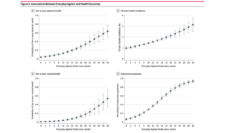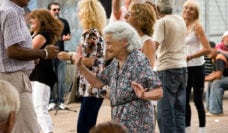As the number of older Americans steadily increases, Social Security policies are pushing workers to delay retirement. However, poor health can pose a challenge to working into old age, especially when coupled with inflexible, precarious, or physically demanding jobs.
Workers without advanced degrees often experience earlier onset of poor health as they age. They also tend to work in physically demanding and stressful conditions and earn lower wages and benefits than those who have completed college. These workers are at risk of being less financially prepared for retirement. And receiving lower Social Security payments after retiring earlier due to poor health can be especially harmful to their economic well-being.
My colleague and I analyzed data from a large, national survey called the Health and Retirement Study to examine whether middle-aged and older adults of differing educational backgrounds have health impairments that limits their capacity for paid work.
In a sample of nearly 10,000 workers, we found that differences in work limitations between educational groups were profound and persistent over the ten years we analyzed. In 2006, 42% of men with GEDs reported that their health limited their ability to work. By comparison, only 14% of men with college degrees reported work limitations than men with GEDs. In 2016, the difference was almost identical: 47% versus 17%. Women showed a similar gap by education level that persisted over time.
Whether a worker becomes disabled depends not only on their health and ability to function, but also on their environment – the job’s demands and working conditions. For example, knee pain may prevent a worker from doing their job if it requires a lot of standing, kneeling, or crouching, but that same pain may not be disabling from a desk job.
Our findings suggest that enabling all workers to work longer may require both health promotion and improved working conditions.
We found that higher levels of income and employer insurance largely explained lower work limitations among respondents with high school degrees compared to workers without high school degrees. In other words, people who completed high school may experience fewer work limitations because they have higher incomes than workers who left school before graduating. Income enhances health by ensuring access to clean and safe housing, healthy food, and leisure-time physical activity. If workers are sick, income and insurance help them afford health care, treatments, and adaptive technologies.
In addition to income and insurance, other factors that helped explain the lower work limitations among those with high school degrees included differences in health conditions and work characteristics. Workers with high school degrees may have fewer work limitations because they have lower rates of diabetes and lung disease, and they have less physically demanding jobs compared to those without high school degrees.
Comparing college graduates to high school graduates, college graduates’ lower work limitations were explained by lower rates of health conditions like high blood pressure, lung disease, heart disease, and stroke. In addition, differences in smoking and drinking played a small role in college graduates’ advantage.
We calculated how much of the difference in work limitations between educational groups was explained by health-related factors versus work-related factors. Work characteristics explained 57% of the disadvantage of workers without a high school degree compared to high school graduates. When comparing college and high school graduates, work characteristics explained 44% of the gap. Researchers have previously used work limitations as a measure of health itself. Therefore, it is striking to see how much the work environment contributes to educational disparities in this disability outcome.
Our findings suggest that enabling all workers to work longer may require both health promotion and improved working conditions. Doing so is key to improving equity in health and economic security for the aging population.
Photo via Getty Images














